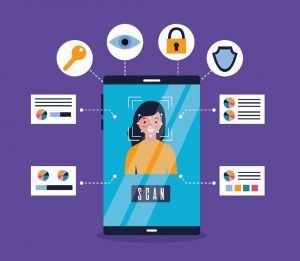With the rapid increase in data breaches occurring daily, so much so that a cyber-attack occurs once every 39 seconds, cyber security measures have become necessary, especially for debt collection agencies. Since these agencies hold such treasured data of their valuable customers, including creditors and debtors, they must ensure proper cyber security measures in their operations and everyday routines.

In today’s fast-paced world, debt collection agencies require proactive security measures for consumer and commercial debt collection. Small and large-scale businesses require proactive cyber security measures to ensure that increasingly incurring security breaches can be avoided at all costs. Speaking of costs, these attacks are also heavy on the budget as the prevention and recovery cost for these attacks is astonishing. Not only should the debt collection agencies be cautious regarding preventing such cyber security attacks, but the predictive analysis of such breaches is also one of the aspects of cyber security measures.
The Age of Cyber Attacks
A cyber-attack is a security breach that proceeds through unethical means for malicious intents and purposes. According to statistics, these cyber-attacks are increasing rapidly.
These attacks can be severely harmful, especially for debt collection agencies, as these companies hold sensitive data that can harm the consumers and the companies involved.
And with the upward trajectory of debt in the US alone, increased cyber security measures are becoming necessary. In 2024 alone, the cost of cybercrime in general was a staggering USD 9.5 trillion, which will increase to USD 10.5 trillion in 2025. The frequency of such data breaches will continue to rise, and therefore, countermeasures in cybersecurity are a must.
Must-Have Cyber Security Measures
The acknowledgment and the consensus of what cyber-attacks are is one thing, but preventing them is a whole different ball game. There are multiple avenues that debt collection agencies can take to ensure they acquire the required cyber security measures that will be helpful against severe data breaches.
Through the implementation of proper policies as well as verification channels, such violations will be prevented tenfold. With the recent advancements in cyber technology, debt collection agencies should keep up with these advancements to ensure customer satisfaction with little to no hindrances. Some of the methods that will ensure that debt collection agencies have proactive cyber security measures are as follows:
Authentication Routes
One of the basic steps that debt collection agencies can take is the implementation of the various authentication routes available that will act as proactive cyber security measures.

In the increasing data breaches caused by impersonation and incorrect authentication, it is vital to ensure authentication procedures and policies are present at all ends. Multiple avenues are available to ensure proper authentication, which is as follows:
Single Factor Authentication (SFA):
The old true and tested Single Factor Authentication refers to using a single medium of protection as a cyber security measure that generally involves a username followed up by the respective password.
Single-factor authentications have been widely used by companies of all industries across the globe for the past couple of decades. In the case of debt collection agencies, creditors hold the data involving personal information related to the respective debtor, which is granted to the collection agencies. The collection agencies are, in turn, responsible for the protection of the said data, which can be easily protected through SFAs. Although SFAs are a common channel of safeguarding data across multiple industries, it is compulsory to overview the pros and cons they bring.
Pros
- SFAs bring a certain level of ease and comfort to the user experience.
- They provide fast and readily easy access to the consumer’s data.
Cons
- SFAs have little to no countermeasures in cyber security
- The probability of authentication passwords being involved in data theft is on the higher side of the spectrum, which makes data breaches much more accessible.
Two Factor Authentication (2FA)
Stepping up the ladder from the SFAs, Two Factor Authentication is much more reliable than the previously mentioned SFAs. The 2FAs involve the implementation of single-factor authentications followed by another layer of security. This can act as a double password for the users if the first defensive layer gets breached due to human error or a cyber-attack.
This route of authentication provides flexibility as well as security as Two two-factor authentications can be anything the user desires, ranging from a code, a single question-answer basis authentication, or even an external SMS or an additional verification email, which is highly used in the case of two-factor authentication in recent days. Like the case of single-factor authentication, 2FAs also consist of certain advantages and disadvantages that debt collection agencies must consider while applying such authentication to their client’s data.
Pros
- 2FAs provide additional security compared to SFAs.
- Said authentication route offers users a unique level of protection that cannot be breached through predictive breach methods.
Cons
- Implementing 2FAs can be slightly more costly but differs from the benefits it provides in the long run.
- Though 2FAs provide an additional layer of security, this layer makes access more difficult and time-consuming, making the user experience more time-consuming when they need easy access.
Multi-factor Authentication (MFAs)
The best amongst the authentications available, which is now considered the industry standard for cyber security measures, is termed multiple-factor authentication. The trend in MFAs has seen such a rise that a market size of approximately USD 38.90 billion is expected by 2029. This class of authentication builds upon the previously discussed SFAs and 2FAs to ensure that the user who is trying to access the data is authorized personnel.
The MFAs are regarded as a must across many top debt collection agencies solely because they follow the currently placed security regulations across the globe. The need for such rules and laws, especially for collection agencies, has been put in place given the recent increasing number of data breaches.
MFAs can require users to submit in-person security information such as a fingerprint scan or a voice recognition security layer. Just as in the case of 2FAs, MFAs can also be used to implement multiple user-based questions in the form of a mini-questionnaire that ensures the verification of the user.

Pros
- MFAs follow the current security regulations for debt collection agencies.
- MFAs can be used to comply with the user by building on the information closely related to the security personnel.
Cons
- Though highly secure, hackers have, as expected, cultivated ways to breach MFAs in turn to bypass cyber security measures.
Response Plan and Policies
Reputable debt collection agencies such as Cedar Financial are well known for ensuring their respective clients as much protection as possible. However, implementing said security is only the first half of countermeasures in cyber security. If you need a reputable and competent debt collection agency, contact Cedar Financial today!
The other half revolves around the steps and actions to take in case of a cyber-attack. And while we at Cedar Financial take immense pleasure in heaving said protocols in case an uncertainty such as a cyber attack does happen (which is highly unlikely), here are some response plans and strategies that can be used to ensure optimal security reactions in case of a data breach.
Employee Training
Personnel in charge of such high data should be given proper training regarding a security breach as a means of increased cyber security measures.
Response Team
A specific team should be employed regarding said security breaches in hopes of recognizing and optimally tackling a security breach as early as possible.
Identification of Anomalies
Keeping an eye out for unusual anomalies should be on the checklist of the everyday employees and the response team. Ideally, predictive analysis and countermeasures should be used to pin down any patterns that eventually lead to cyber data threats.
Encryptions
Proper Encryption across all data sets in debt collection agencies is a vital part of proactive cyber security measures that ensure that the data cannot be read or deciphered by unauthorized personnel.
Encryptions can also be phrased in terms of sure firewalls that can be placed to establish a framework that forbids any data leakage during data transfer, as well as day-to-day communication that can include user-sensitive information. These encryptions offer variations and flexibility, as seen in the case of authentication routes, which allows the users and security personnel to implement optimal measures to improve cyber security.
Symmetric Encryption
Symmetric Encryption involves the implementation of a single key that must be used by both parties in a debt collection agency to access and read the relevant information.
Asymmetric Encryption
Asymmetric Encryption involves the same framework as symmetric Encryption, including an additional public key and a single key to cipher and decipher the data to be accessed.
End-to-End Encryption
End-to-end Encryption is primarily used in communication channels. It involves tampering with data at its core to ensure that the messages being sent are encrypted until they reach the intended user. This is done by converting said messages into tampered cipher text, which can only be reversed by the receiver’s deciphering key.
Communication Verification
It is crucial for debt collectors to not only have a thorough and up-to-date communication bridge with their clients but also verify whether they are speaking to the correct individuals regarding their sensitive data since the probability of impersonation is on the higher end of the spectrum, which leads to such cyber breaches.
Communication is critical, especially in the debt collection industry. And proper verification is integral to authentic communication between the related parties. Such verification should be a two-way channel as the debtors should also be careful regarding to whom they supply the relevant information.
Implementing such verification procedures helps safeguard the company’s intellectual assets and improves communication between the agency and the respective clients.
Third-party service providers
While in-house security is usually said to be the best course of action, especially for debt collection agencies, when it comes to stringent cyber security measures, multiple third-party service providers solely focus on providing security to their respective clients against malicious data breaches.
That being said, the responsibility of doing a profile check related to the selected third-party service provider falls on the debt collection agencies themselves, which requires them to have a specific set of metrics that these service providers either follow or should follow for the potential partnership to prosper for the well-being of highly sensitive data.
With the rapid increase in data breaches occurring daily, many consumers and businesses need a secure debt collection agency. While every debt collection agency follows its rules, regulations, and principles, Cedar Financial has provided state-of-the-art security protocols aligning with the commendable services since 1991. From exemplary debt collection and receivable management to much more, you can contact us today for a step-by-step process and competitive results.










